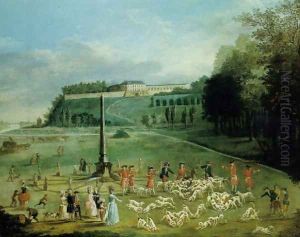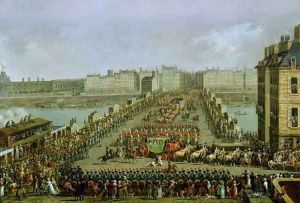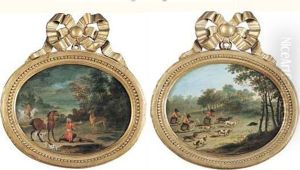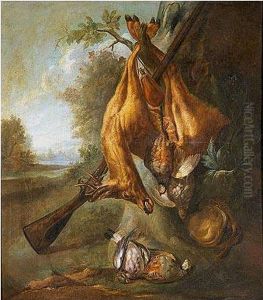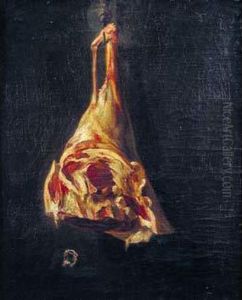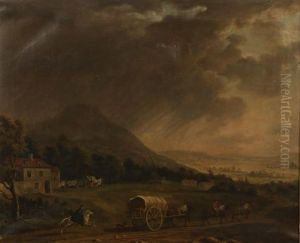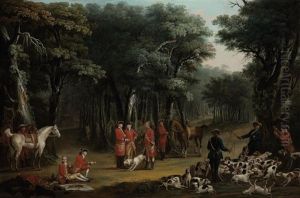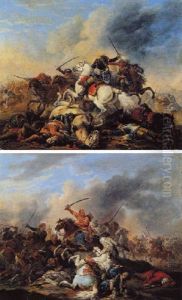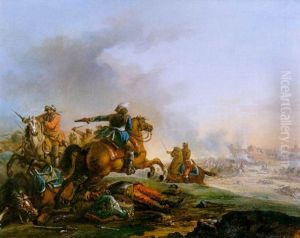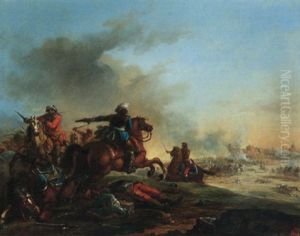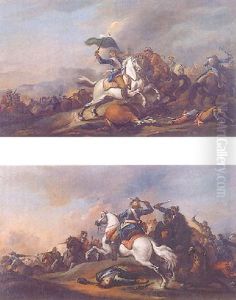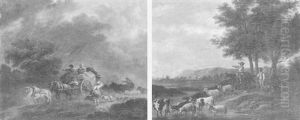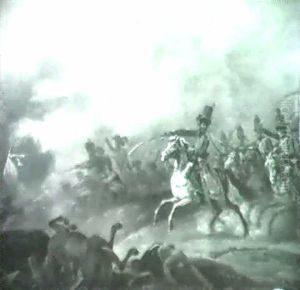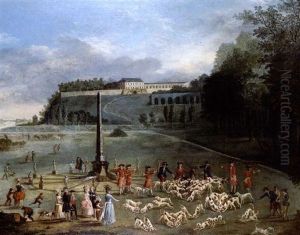Jacques Bertaux Paintings
Jacques Bertaux was a French painter, born in 1752 in Paris, France. His life spanned a tumultuous period in French history, witnessing the end of the Ancien Régime, the French Revolution, and the beginning of the Napoleonic era. Bertaux is primarily known for his historical paintings, especially those capturing significant events of the French Revolution. He was a pupil of the esteemed painter Joseph-Marie Vien, a leading artist of the neoclassical movement in France, who greatly influenced Bertaux's artistic development.
Bertaux's career as an artist took a definitive shape during the late 18th century, a time when the political and social upheaval in France provided ample material for artists interested in documenting contemporary events. One of his most famous works, 'Prise du Palais des Tuileries' (Capture of the Tuileries Palace), which depicts the storming of the Tuileries Palace on August 10, 1792, is a vivid representation of the chaos and fervor of the Revolution. This painting, among others, highlights Bertaux's ability to capture the emotion and intensity of the moment, making his works important historical documents as well as artistic achievements.
Despite his focus on historical painting, Bertaux's body of work also includes religious subjects and portraits, showcasing his versatility as an artist. However, it is his detailed and dynamic representations of revolutionary events that have cemented his place in art history. His works are characterized by their detailed composition, dynamic figures, and the use of light to enhance the dramatic effect of the scenes depicted.
After the Revolution, Bertaux continued to work and receive commissions, including from Napoleon's government, which sought to legitimize its rule through the arts. He participated in several of the Salons, the official art exhibitions of the Académie des Beaux-Arts in Paris, which were central to an artist's recognition and success at the time. Jacques Bertaux passed away in 1818, leaving behind a legacy that provides invaluable insights into one of the most turbulent periods in French history through the lens of an artist who lived and painted it firsthand. His works remain a significant part of French cultural heritage, exhibited in museums and galleries across France and beyond.
